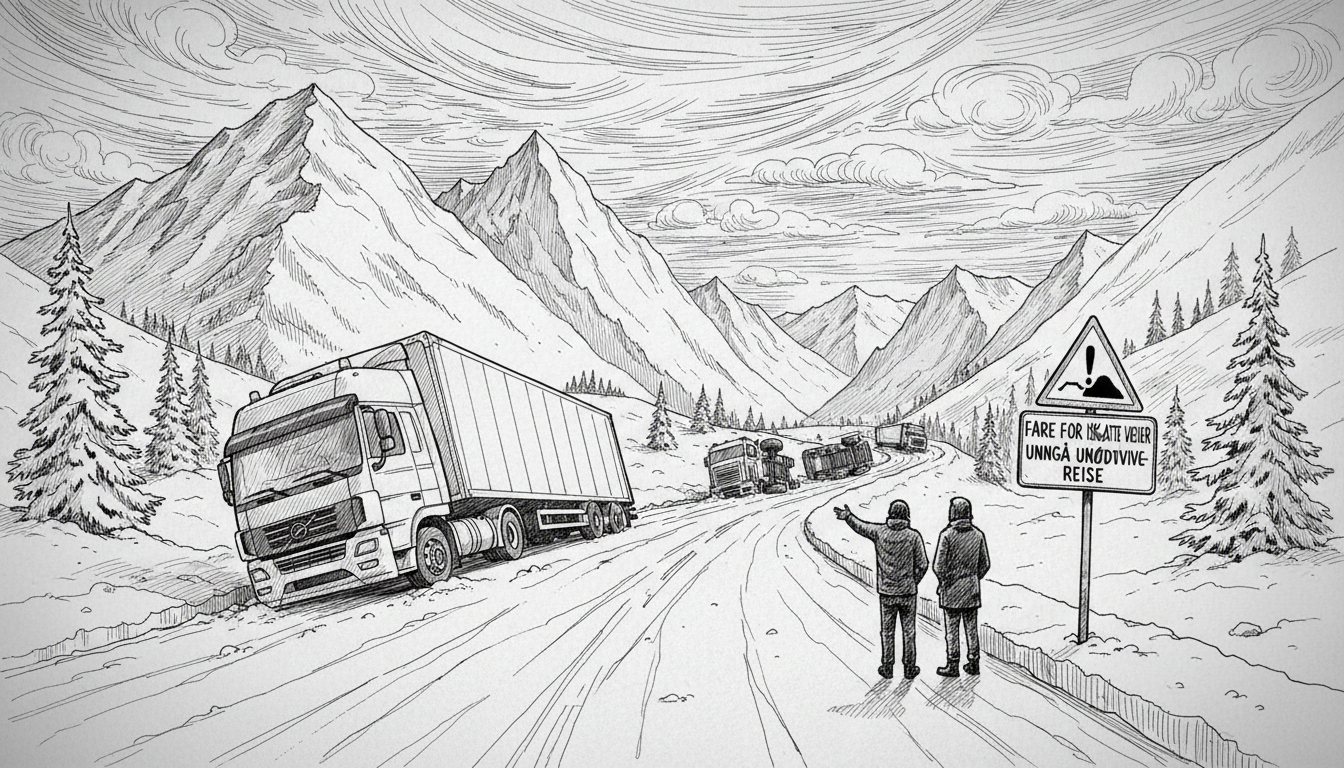Norwegian authorities issued widespread warnings about dangerously icy roads following multiple truck accidents and hazardous driving conditions across the country. The situation has become particularly treacherous as temperatures rise after several days of freezing weather.
Kjetil André Bråthen, a resident near Bjørkebekk in Aremark, Østfold, described the conditions as nearly impossible for walking. "It's been almost hopeless to stand upright on your feet," he reported after checking conditions while taking out trash. He advised drivers to be extremely cautious, noting that smaller roads remain particularly slippery.
Road traffic centers confirmed the dangerous situation. "With precipitation and rising temperatures, it becomes very slippery. Today you need to be alert. What looks wet could be ice," said traffic operator Tale Eikeset about the current conditions.
Police in the Eastern district reported mirror-smooth conditions and confirmed a truck had overturned during the morning hours. The situation spans multiple regions with varying severity.
In Eastern Norway, temperatures have begun creeping upward after days below freezing. This has created poor driving conditions and led to several accidents during Saturday morning. Road authorities warned about particularly icy county roads in Akershus and Østfold, combined with slippery sections on main highways.
Central Norway has experienced some traffic accidents but no major incidents, though traffic operators anticipate a busy day. "We expect quite a busy day here at the Road Traffic Center in Central Norway," said traffic operator Runar Kvalshaug.
He explained that the mild weather will cause snowmelt, creating high snowbanks throughout the region. "Then there will be a lot of water on the road surface, and danger of aquaplaning and ice in several places. We expect extra pressure today."
Southern Norway faces similar challenges. Icy conditions have been reported throughout Agder county, with Kristiansand experiencing slippery roads in several districts. Road crews are working to salt roads, but the process takes time to cover the entire network.
Western Norway shows varying conditions, with the Meteorological Institute issuing a yellow warning for ice from Friday through Saturday morning in Vestland. Traffic operator John Andreas Omdal reported increased pressure on roads, particularly around Askøy, Radøy, Holsnøy and Austrheim.
Northern Norway presents a less dramatic picture than other regions. Traffic operator Morten Åkvik reported some calls about large snow amounts but noted the day doesn't stand out significantly from normal winter conditions.
This pattern of dangerous winter driving conditions is familiar to Norwegians but poses particular risks during transitional weather periods. The combination of melting snow, refreezing temperatures, and limited road treatment on less-traveled routes creates perfect conditions for accidents.
Drivers are advised to check local weather forecasts and traffic updates before traveling, especially during periods of heavy traffic or poor weather. Authorities emphasize that if travel isn't necessary, staying home represents the safest option during such conditions. The situation highlights the ongoing challenges of maintaining safe transportation networks in Norway's variable winter climate, where conditions can change rapidly and create unexpected hazards even for experienced drivers.

